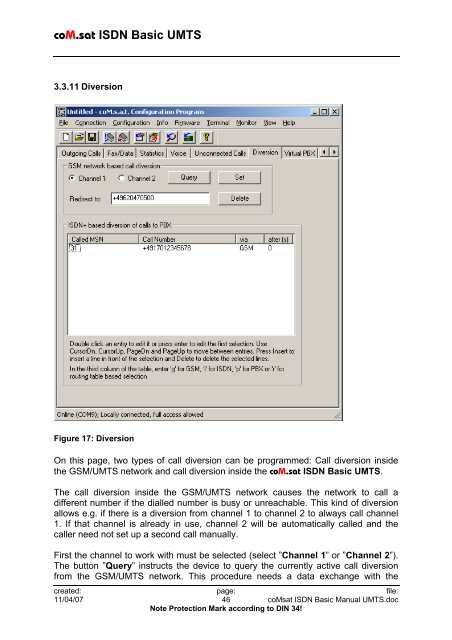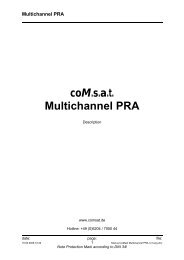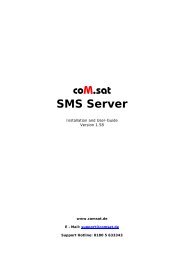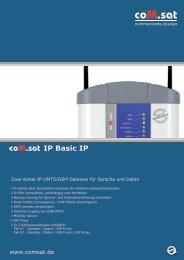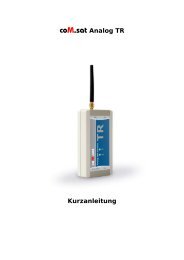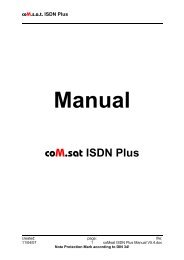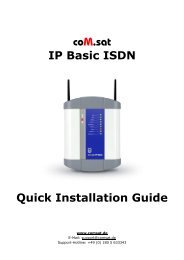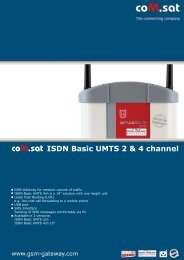coM.sat ISDN Basic UMTS
coM.sat ISDN Basic UMTS
coM.sat ISDN Basic UMTS
You also want an ePaper? Increase the reach of your titles
YUMPU automatically turns print PDFs into web optimized ePapers that Google loves.
<strong>coM</strong>.<strong>sat</strong> <strong>ISDN</strong> <strong>Basic</strong> <strong>UMTS</strong><br />
3.3.11 Diversion<br />
Figure 17: Diversion<br />
On this page, two types of call diversion can be programmed: Call diversion inside<br />
the GSM/<strong>UMTS</strong> network and call diversion inside the <strong>coM</strong>.<strong>sat</strong> <strong>ISDN</strong> <strong>Basic</strong> <strong>UMTS</strong>.<br />
The call diversion inside the GSM/<strong>UMTS</strong> network causes the network to call a<br />
different number if the dialled number is busy or unreachable. This kind of diversion<br />
allows e.g. if there is a diversion from channel 1 to channel 2 to always call channel<br />
1. If that channel is already in use, channel 2 will be automatically called and the<br />
caller need not set up a second call manually.<br />
First the channel to work with must be selected (select ”Channel 1” or ”Channel 2”).<br />
The button ”Query” instructs the device to query the currently active call diversion<br />
from the GSM/<strong>UMTS</strong> network. This procedure needs a data exchange with the<br />
created: page: file:<br />
11/04/07 46 <strong>coM</strong><strong>sat</strong> <strong>ISDN</strong> <strong>Basic</strong> Manual <strong>UMTS</strong>.doc<br />
Note Protection Mark according to DIN 34!


